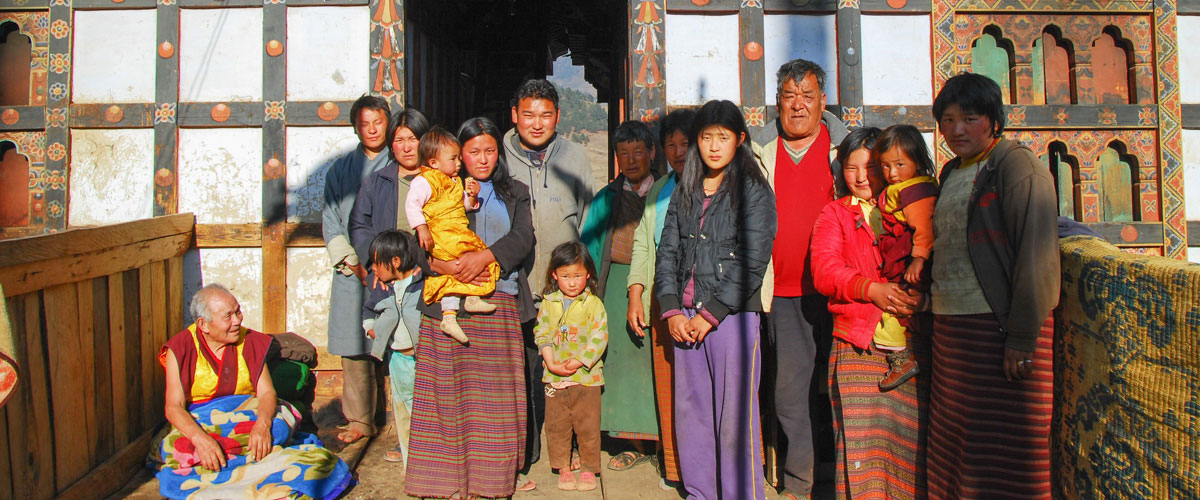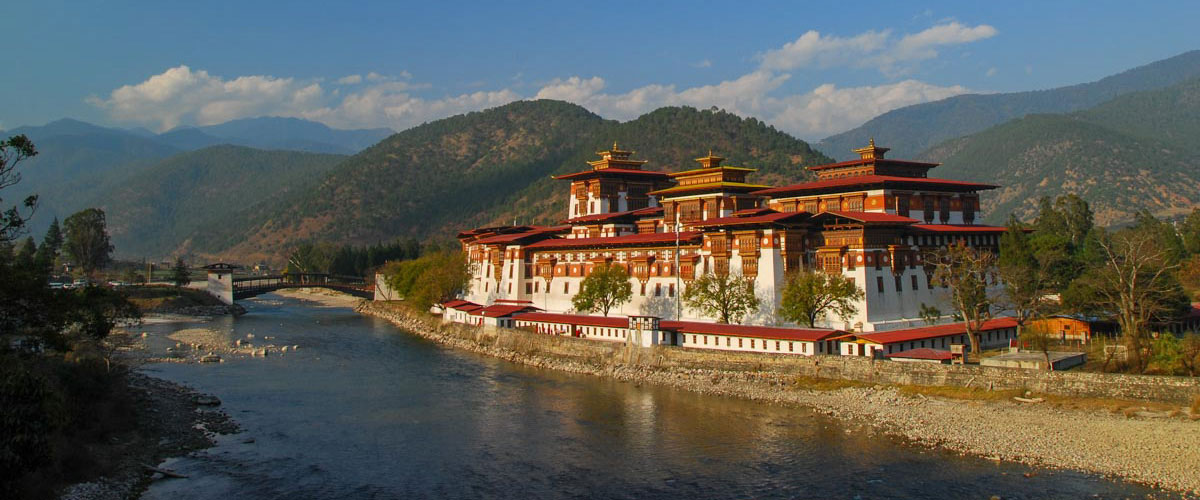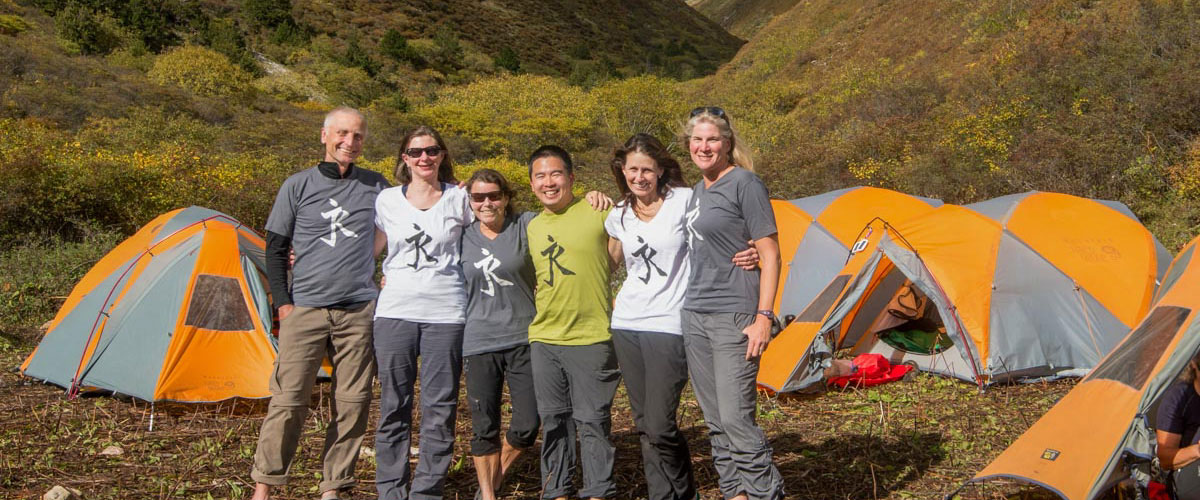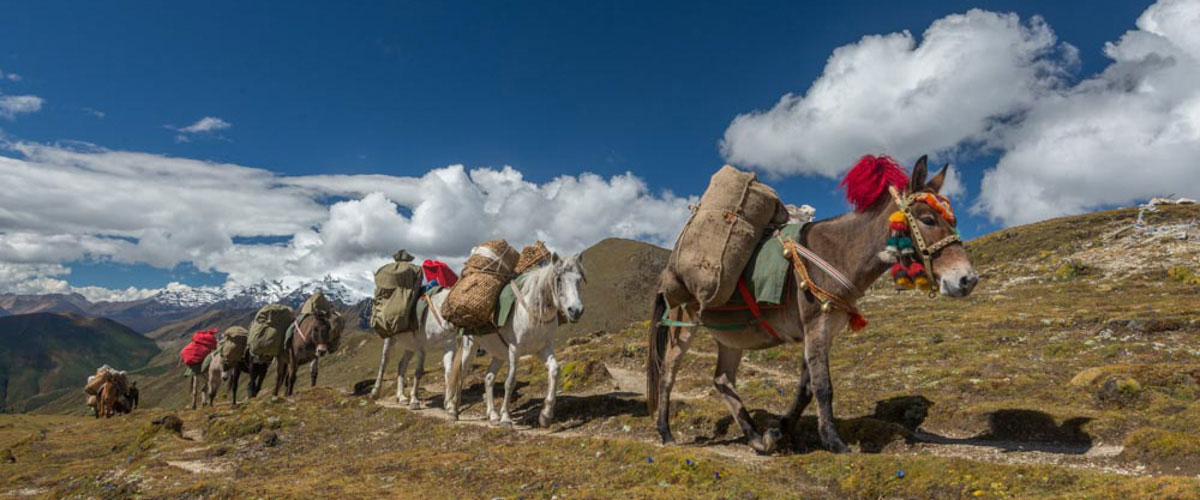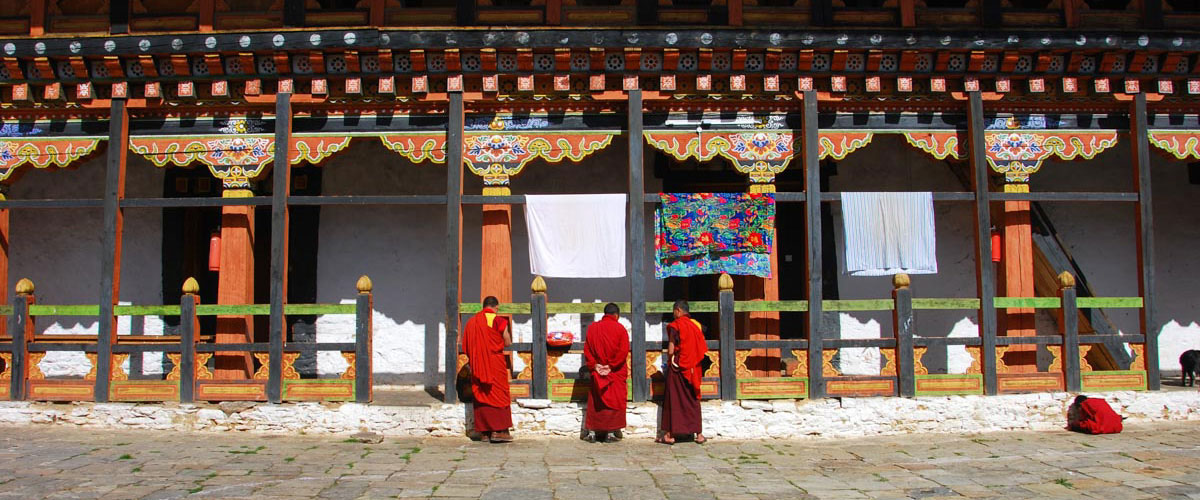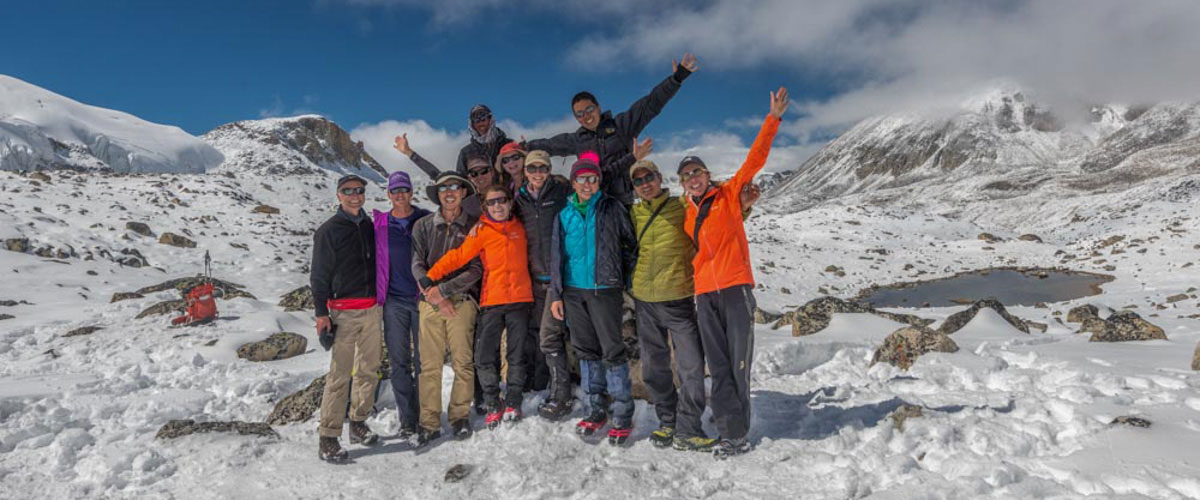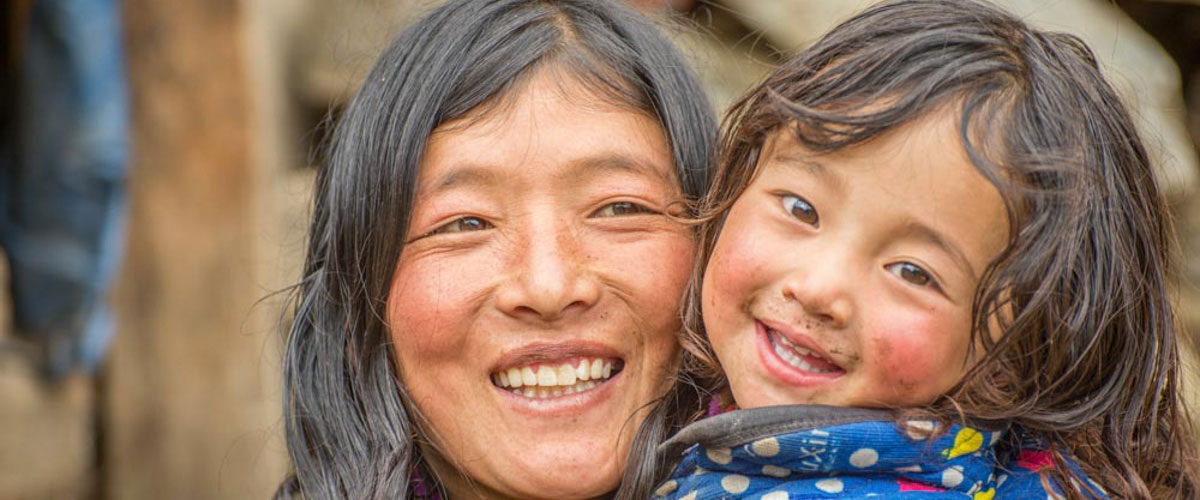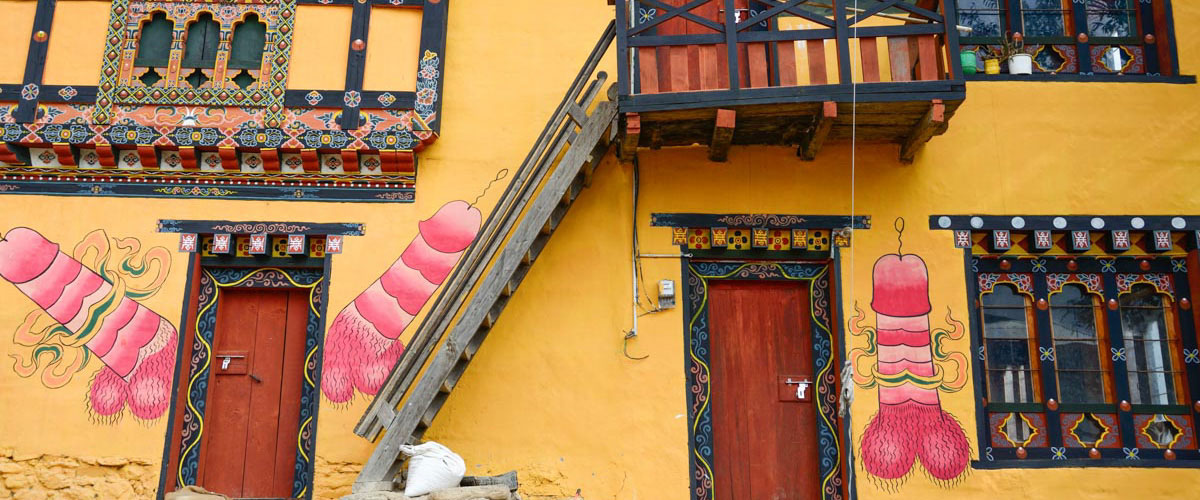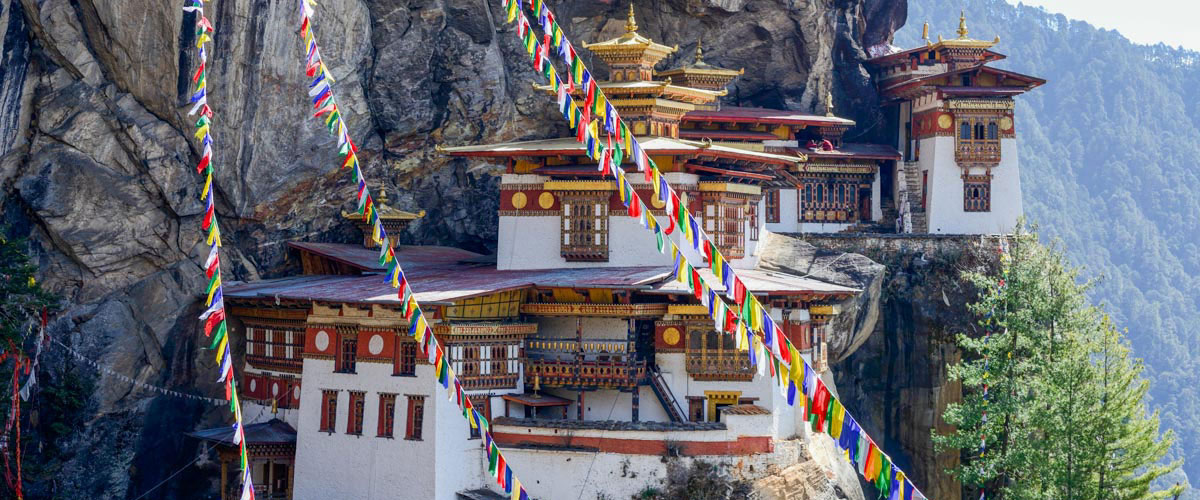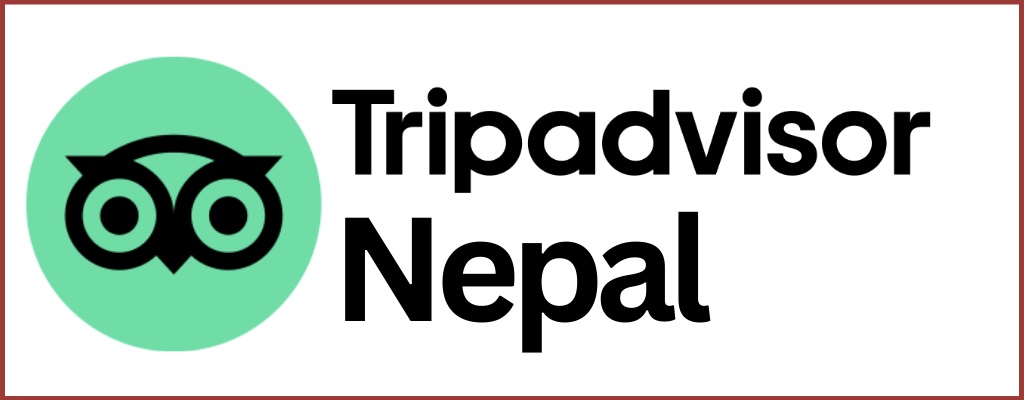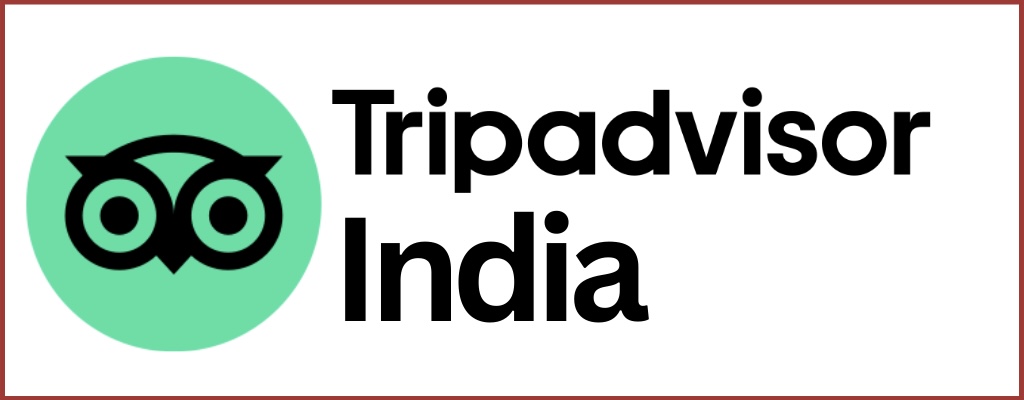Bhutan’s West & the Pobjikha Valley | Cycling Bhutan
Paro – Thimphu – Dachula – Tango – Punakha – Phobjikha – Chuzoma – Haa
The perfect shorter cycling journey in Bhutan’s beautiful and cultural west, a wonderful way to experience this remote Tibetan Buddhist Kingdom without sacrificing staying at Bhutan’s renown boutique hotels.
Thinking about a different way to experience the magical Kingdom of Bhutan? This is a wonderful bicycle journey though sublime western Bhutan in just under two weeks. We start in the bucolic capital of Bhutan, the historic Paro, and make our way through idyllic countryside roads east to Punakha and the Phobjikha valley, home of the black-necked cranes. We’ll also have a day in the remote and mountainous Haa valley, one of the most pleasant biking regions of Bhutan and one of the most remote.
You will have plenty of time in Paro, Thimpu and Bhutan’s other sites to explore the Buddhist monasteries, fortresses, dzongs and visit the museums and restaurants, of course sampling Bhutan’s signature dish, ema datsi (chilis & cheese)!
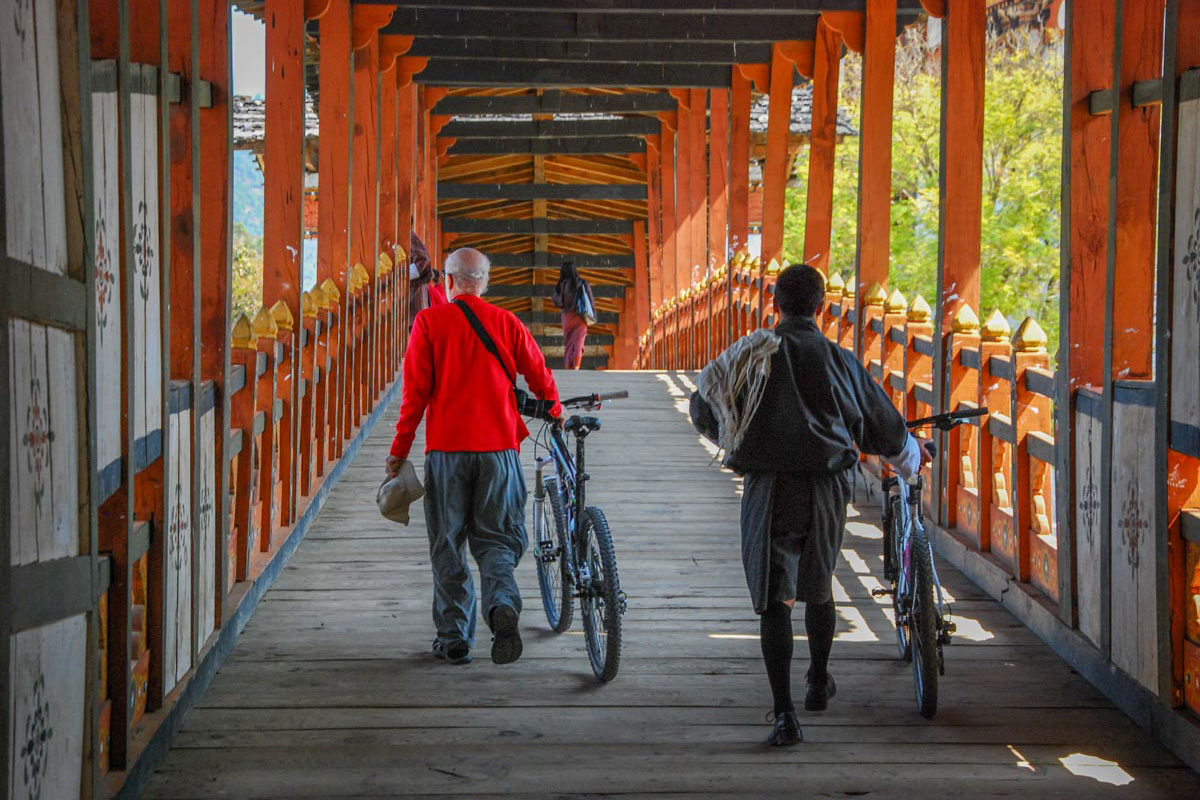
Trip
Bhutan’s West & the Pobjikha Valley | Cycling Bhutan
Day 01: Arrive Paro
Day 02: Bike to Thimpu
Day 03: Bike to Tango Cheri
Day 04: Bike to Punakha
Day 05: Punaka Explore
Day 06: Bike Phobjikha Valley
Day 07: Pabjikha Explore. Bike to Chuzomsa
Day 08: Bike to Thimpu
Day 09: Bike to Paro (over the Dochula Pass)
Day 10: Bike to Haa
Day 11: Depart
Kamzang Journeys Bicycle Trip Photos
The Great Bhutan Bicycle Journey 2014
The Great Bhutan Bicycle Journey 2011
Itinerary
Day 1 – Arrive Paro 2250m
Upon your arrival, drive to the hotel. After lunch explore the charming capital city of Paro, visiting the many small shops that sell everything from beetle-nut to exquisite traditional fabric. Evening you will get the chance to watch the locals playing the traditional game, archery. Evening tea in a local restaurant. Dinner at hotel. Overnight: Gangtey Palace
Day 2 – Bike to Thimphu 2380m
The route has no major climb or drop. It follows the wide Paro river valley and Sightseeing in the afternoon then the narrow Thimphu river valley until Thimphu. (Distance – 53 km)
Day 3 – Bike to Tango Cheri 2380m
We have a lovely morning ride through the countryside todahy. The route takes you north up the valley passing through farm houses and crop fields. The route ends at the end of the valley at 2600m. Afternoon free. (Distance – 14 km)
Day 4 – Bike to Punakha (over the Dochula pass)
After the top of the pass the route drops through the open view forest. The route continues to drop for 42 Km until the junction of Punakha – Wangdi road at 1550m. The route continues further for 6 Km to the saddle of Olakha and then to the hotel further 850m climb uphill. Visit the Punakha Dzong in the evening. (Distance – 70 km)
Day 5 – Explore the biking trails in Punakha
Option can be crossing the bridge in Punakha town at 1250m to the other side and biking all along the farm road along the beautiful Punkaha river.
Day 6 – Bike to Phobjikha Valley
The route is challenging. It will take you down to the road from the hotel and a gentle climb to the Punahka – Wangdi Junction for 6.8 Km. The route follows east until the dip on the bridge at 1200m. This is your lowest point. Cross the bridge, bike through small Wangdi town and continue for another 61 Km to the Pass at 3360m (your highest point). The gravel road then drops to the Phobjikha valley for another 3 Km to 2700m. (Distance – 76 km)
Day 7 – Explore Phobjikha. Bike to Chuzomsa 1350m
We have the morning to explore Phokjika on our bikes. After lunch, we’ll retrace the route back until Chuzomsa where you meet the river in a narrow valley. (Distance – 56 km)
Day 8 – Bike to Thimpu
It’s a lovely day of biking back to Thimpu …
Day 9 – Bike to Paro over the Dochula Pass
Retrace the ride back passing through wangdi town after 8 Km. It is further 47 km up to the Dochula pass at 3100m. The route drops 17km to Simtokha at 2250m and follow the route all along the river to Paro 2250m for another 48 Km. (Distance – 120 km)
Day 10 – Day excursion to Haa Valley
Today’s route is one of the most challenging climb, over one of the highest pass of Bhutan, Chelela pass 3,850m. making this the most spectacular climb in the country directly overlooking the highest mountain peak of Bhutan, Mt. Jumolhari 7,230m. After the pass follow the steep descend down to the valley of Haa. Picnic lunch and afternoon back to Paro.
Day 11 – Departure
Morning transfer to airport (15 mins) for your departure flight out of Paro …
Highlights & Reviews
Trip Advisor Reviews
Client Highlights
Once again I carefully chose Kamzang for my exotic, indulgent trip to Bhutan. All praise to Kim and Lhakpa for making sure this was the best possible trip for our money, a trek in a very expensive/ exclusive part of the Himalayas. It was tough, it was amazing and it was the best thing I have ever done. Kim and Lhakpa spun their special magic to make this trek amazing. The Bhutanese guide Tse Tse made sure we had a good run down of what to expect each day.
Our tough trek, mud, rain, snow was everything we expected, however our time in camp, our food and our morale was always boosted by Kim and Lhakpa on even the toughest of days – and this is what we all signed up for – you cannot do the Snowman Trek and think it will be easy.
I am so glad I did this trek with Kamzang Journeys. I would do the toughest trek with Kamzang anywhere in the world. You will always get safety, dedication and genuine concern from these guys, they will ultimately help you reach your potential, and you will become friends for life. They will help you go forward with your trekking goals. Thanks guys. I will book again can’t wait.
– Shannon F (Australia), Bhutan Lunana Snowman Trek 2016
Read More Testimonials
Trekkers’ Comments
Trip Highlights
- Great biking on relatively traffic-free roads …
- Black-necked cranes at Phobjika
- Markets at Paro & Thimpu
- Punakha Dzong
- Drukgyal Dzong
- Taktsang (Tiger’s Nest) Monastery
- Remote Haa Valley
- Idyllic side-trips in lovely valleys
- Traditional villages & cultures
- Spectacular mountain vistas & passes
- THE best of Bhutan
Kim Bannister Photo Gallery | Trip + Trek Photos
Kim Bannister Photography
Travel Reading | Enhance Your Trip!
Travel Books
Online Articles on Bhutan
Soaking in a Unique Bath Culture | BBC Travel
Why Don’t People See the Yeti Anymore? | BBC
Bhutan, a Higher State of Being | New York Times
Bhutan Untamed: Snow Leopards on the Snowman Trek | Telegraph
Bhutan’s Dark Secret to Happiness | BBC Travel
Bhutan’s Enlightened Experiment | National Geographic
Bhutan Rising | WWF
Bhutan: Travel Blueprint | Wanderlust UK
Creating a Future for Healthy Forests in Bhutan | WWF
Phallus Art Brings Luck in Bhutan – And Tourists, Too | New York Times
Date & Price
Private Excursions
11 days
Trip Price – Inquire
Private Excursions
Single supplement – $tba
Bike rental – inquire
Includes
- All accommodation, sightseeing & meals during trip at 3 & 4-star hotels
- Airport transfers
- Group transportation by Toyota vans or Coaster vans (depending on group size)
- Bike rentals
- Bike mechanic
- Entry fees
- International flight booking services …
Excludes
- Travel or travel health insurance
- International flights
- Equipment rental
- Alcohol & bottled drinks
- Laundry
- Tipping & other items of a personal nature
- Sleeping pad if needed (see itinerary)
Tips & Extra Cash
Bring shopping and drinking money! We recommend $100-$150 per trekker as tips for the staff, and an extra $200-$300 to spend during the trip.
Contact & Details
Kamzang Journeys Contact
Kim Bannister
kim@kamzang.com
kamzangkim@gmail.com
Mobile: +(977) 9803414745 (WhatsApp), 9863196743
Kathmandu Contact
Khumbu Adventures
hiking.guide@gmail.com
Lhakpa Dorji Sherpa Mobile: +(977) 9841235461, 9705235461
Doma Sherpa Mobile: +(977) 9841510833, 9705510833
Nuru Wangdi Sherpa Mobile: +977 9803633783 (WhatsApp),
Bhutan Contacts
INNER ROUTES
Owner | Loja Sureg
sloja2013@gmail.com
+975 17 420 433
Office | Jigme & Pema
jigmelojaktbt@gmail.com, Pema tobgayloja@gmail.com
Garmin InReach | Unlimited On-Trek Text Messages + Route Map
We have a Garmin MapShare page and a Garmin InReach satellite messaging device for sending and receiving messages on the treks guided by Kim + Lhakpa. Give the link to people who want to follow or communicate with us and have them send a message. The ‘message’ button is on the top left of the email link that they receive; the sender needs to input an EMAIL address (instead of mobile number) to get a response. You can email them back directly during the trek (the device is linked to my mobile) as much as you’d like. Messages are free, enjoy!
Follow Us on Facebook
Kamzang Journeys Facebook
I will post InReach updates to our Kamzang Journeys Facebook page if friends & family want to follow our progress.
Bhutan Visas
Our Bhutan agent will issue your Bhutan visa and email it to you at least 10 days before your arrival in Paro.
Indian Visa
You will have to have an e-Tourist Visa for the end of our trip, entering Assam. Be sure to have your Indian Visa before arrival in India. Most countries qualify for the new visa-on-arrival system, which is valid for 30 days, and is double entry. NOTE that you need to apply and pay for the visa BEFORE arriving in India. You get the actual visa with your paid application once in India.
Indian Visa
Indian Visa Reference
You can print out + fill out your Visa on Arrival form before arriving in India, but you need to apply for the visa before leaving for India.
Travel Agent Delhi: Dhruv Travels, 2464, Nalwa St, Chuna Mandi, Paharganj, New Delhi, 110055, India, +91 11 2358 2715
Hotel Delhi: Jyoti Mahal Guest House, 2488-90 Nalwa Street, Chuna Mandi, Pahar Ganj, New Delhi,110055, +91 1123580523/24/25/26
Indian Visa Note
You will need a 30-day e-Tourist Visa for India, as well as for Bhutan (our Bhutan agent gets these) for this bicycle trip. Book your onward ticket out of Guwahati from early afternoon onwards on Day 18. Do book extra luggage when leaving Guwahati as extra luggage in India is $$$.
Flights To + From Bhutan
Our Bhutan agent can issue your flight to Paro from various destinations and can book your return flights, whether from Paro or from Guwahati in Assam, India. You can also book your own flights to Bhutan and from Bhutan or India. At the moment Druk Air is the only carrier flying into and out of Bhutan.
Travel Medical Insurance
Required for your own safety. We carry a copy of your insurance with all contact, personal and policy information with us on the trek and our office in Kathmandu keeps a copy. Note that we almost always trek over 4000 meters (13,000′) and that we don’t do any technical climbing with ropes, ice axes or crampons.
Global Rescue Rescue Services
We recommend (but don’t require) that our trekkers sign up for Global Rescue services as a supplement to your travel medical insurance. You can book this directly through our Kamzang Journeys site.
Global Rescue
Medical On-Trek
We have a full medical kit with us including Diamox (for acclimatizing), antibiotics, inhalers, bandages, re-hydration, painkillers, anti-inflammatory drugs and other essentials. Kim has First Aid, CPR and Wilderness First Responder (WFR) certifications as well as many years of experience with altitude in the Himalaya but is NOT a qualified medic or doctor, so please do have a full check-up before leaving home, and inform us of any medical issues. This is for YOUR OWN safety.
DO bring all prescription medications and rehydration powders-electrolytes. We advise bringing your own Diamox, Ciprofloxin, Azithromycin + Augmentin. We do have all of these with us, but the Western versions are generallly more reliable than the Indian equivalents. See Gear List for a full list of recommended medications for the trek.
Bhutan Health Information
CDC
We also recommend bringing probiotics with you to help prevent infections while on trek. Doctor’s recommendation!
Travel Reading | Enhance Your Trip!
Travel Books
General Bhutan Information
See Bhutan Tab
Arrival Paro
Bhutan Contacts
INNER ROUTES
Owner | Loja Sureg sloja2013@gmail.com
+975 17 420 433
Office | Jigme jigmelojaktbt@gmail.com, Pema tobgayloja@gmail.com
Early Arrival in Bhutan
You will be met at the Paro airport by a representative from our Bhutan travel agency. Look for a sign with your name on it, they will be looking for you. You’ll be driven to the hotel in Paro where you will meet Kim, Lhakpa and those from the group who have already arrived. Everything is included in Bhutan, so if you arrive early you’ll have a driver, car and guide at your disposal.
Arrival Hotel
Provide upon Booking
Flights To + From Bhutan
Our Bhutan agent can issue your flight to Paro from various destinations and can book your return flights, whether from Paro or from Guwahati in Assam, India. You can also book your own flights to Bhutan and from Bhutan or India. At the moment Druk Air is the only carrier flying into and out of Bhutan.
Bhutan Visas
Our Bhutan agent will issue your Bhutan visa and email it to you at least 10 days before your arrival in Paro.
Currency, Credit Cards + ATMS
Bhutanese Ngultrum = Indian Rupee. Although the national currency is the ngultum, IC is accepted throughout Bhutan.
+ In 1974, the ngultrum was introduced, replacing the rupee at par. The ngultrum is equal in value to the Indian rupee. India was key in assisting the Bhutanese government as it developed its economy in the early 1960s. When the ngultrum was introduced, it retained the peg to the Indian rupee which the Bhutanese rupee had maintained. The ngultrum does not exchange independently with other nations’ currencies but is interchangeable with the Indian rupee.
You’ll want local currency with you on the trip and trek for drinks, snacks, beer, soda and general shopping. There are many chances to shop during the trip, especially in eastern Bhutan, and usually local crafts to buy en route. There are ATMs in Paro, Thimpu and other cities, and you’ll want some cash to change as well.
Most larger craft shops in Thimpu, Paro and Punakha will accept credit cards, although there is generally a merchant fee surcharge. Credit cards aren’t as widely accepted in the central or east of Bhutan.
Tipping in Bhutan
Tips are best in local currency, the Bhutanese ngultrum. Guides and drivers will expect tips when you last see them, so for sightseeing sections before the trip, the drivers will expect small tips, and the same for the drivers after the trip.
Bhutan Temperatures + Dress Etiquette
See GEAR LIST tab for suggested gear. This is a winter bicycle trip, and although it can be cold or wet on the passes (rain or snow), generally the temperature isn’t very cold, and evenings are spent in warm lodges, often with stoves! The winter months (November – March) are chilly in the mornings, cold enough that you might start the day in a down jacket, but warm up to jeans and t-shirt weather by late morning.
For other private cycling trips: Much of Bhutan in the Spring and Autumn is warm during the day (t-shirt, sandals, light pants or skirt weather), cools down in the afternoon. Nights are often below freezing although they can also be much warmer. Summer is hotter and wetter. Nights require a down jacket if you’re sitting outside. It never hurts to have an umbrella in Bhutan as it can rain at any time of the year!
Dress conservatively in the cities and on the trail as a rule. Shorts are OK if they aren’t too short, NO shorts or tank tops in the monasteries. Use your good judgment! See Bhutan Tab for the Bhutanese dress code.
Shopping in Bhutan
Bhutan is known for its crafts and textiles, and there are many local craft markets around Bhutan where you can pick up wonderful things to bring home. Your guide will help if you’re interested in shopping while in Bhutan!
Gear
Kamzang Journeys Products
Duffel Bags, T-Shirts, Camp Towels, Buffs, Leather Passport Wallets, Totes & Bags, Himalayan Textile Pillow Covers & More!
Kamzang Journeys Products
Gear List
Guideline for the gear you will need on the trek. Please ask if you have questions. 20 kg per person!
- Duffel Bag
- Day Pack (30-45 L)
- Sleeping Bag (-10 to 20F/-23C to 30C)
- Air Mattress
- Down Jacket
- Trekking Boots
- Running Shoes or Lighter Shoes (optional)
- Crocs (evenings + washing)
- Hiking Sandals (or Crocs – river crossings)
- Trekking Pants (2-3)
- T-Shirts (2-3)
- Long-sleeve Trekking Shirts (2-3)
- Trekking Jacket
- Wind + Waterproof Jacket + Pants
- Fleece or Thermal Top + Bottom (evenings)
- Lightweight Long Underwear (sleeping + layering)
- Socks (4-6)
- Gloves (lighter + heavier for passes)
- Wool Hat
- Baseball Cap or Wide-brimmed Hat
- Camp Towel
- Trekking Poles (optional, recommended)
- Down Booties (optional, recommended)
- Sunglasses (+ extra pair)
- Water Bottles | Nalgenes (2-3)
- Bladder (optional, recommended)
- Toiletries, Sunscreen with SPF, Lip Balm with SPF
- Watch (or alarm)
- Extra Batteries
- Battery Chargers
- Head Lamp
- Yak Trax or Micro Spikes (for treks with icy passes)
- Small Water Filter or Steripen (optional, to carry in daypack)
- Camp Washing Bowl (optional, collapsible for clothes)
- Laundry Detergent or Bio-degradable Clothes Soap
- Hand Sanitizer
- Small Solar Panel (optional, recommended for iPods, iPhones, camera batteries, Kindles)
- Book(s)
- Zip-Lock Plastic Bags (extra protection for electronics, toiletries)
- Soft Toilet Paper | Tissues (we supply toilet paper but you will want something softer for blowing your nose)
- Baby-Wipes | Wet-Wipes (for personal cleaning)
- Handi-Wipes, J-Cloth or Chux (optional – quick clean, fast drying)
- Rehydration | Electrolytes
- Snacks!
- Personal Medical Supplies
Medical + Suggested MEDS
We have a full medical kit with us including Diamox (for acclimatizing), antibiotics, inhalers, bandages, re-hydration, painkillers, anti-inflammatory drugs etc. but please bring a supply of all prescription and personal medications. Kim has First Aid, CPR and Wilderness First Responder (WFR) certifications as well as many years of experience with altitude in the Himalaya but is NOT a qualified medic or doctor, so please have a check-up before leaving home, and inform us of any medical issues. This is for YOUR OWN safety!
Suggested prescriptions + meds: Dexamethasone, Nifedipine + Diamox (altitude), Azithromycin, Ciprofloxacin + Augmentin (antibiotics), Compeed or blister bandages, Tegaderm, bandages, tape, antibiotic ointment + Betadine (Povidone-Iodine ointment) (wounds + cuts), knee + ankle supports/braces (if required), ACE bandage for sprains + strains. Bring whatever pain meds you generally use (Ibuprofen, Paracetamol/Tylenol, Diclofenac), meds for diarrhea (Loperimide/Immodium) and nausea (Ondansetron), antihistamines (non-drowsy, and Benadryl is ok for a drowsy one that might help with sleep), as well as any medications that you take regularly or that your doctor prescribes. We recommend picking up a combination salmeterol and fluticasone inhaler in Kathmandu, good for (from a doctor trekking friend “high altitude cough due to reactive airways, which is kind of like temporary asthma. The ingredients in the inhaler relax the bronchial passages and calm inflammation in the airways.”
Stay away from sleeping medications, drugs in the codeine-opiate-narcotic family and other drugs that suppress your breathing (not a good at altitude). And don’t forget electrolytes! – have some with you in your pack (as well as snacks) every day please …
We’re happy to take excess medical supplies off your hands when you leave if you won’t need them and pass them on to others. We use lots of the large amount we have with us to treat locals as well as our own trekkers…
Comments on Gear
Layers are essential for trekking. Quality is more important than quantity. It’s worth investing in the great, newer lightweight trekking gear available in all gear shops, online or in Kathmandu.
Kim’s Gear Suggestions: I generally wear a trekking t-shirt, light trekking pants, a mid-weight shirt, a lightweight synthetic jacket (instead of a fleece), a lightweight jacket and pants for wind and rain. If the weather looks stormy or it’s a pass day I carry a lightweight down jacket and a storm-weight jacket. I always have a pair of lightweight gloves (heavier ones additionally for pass days), a hat, a baseball cap and an extra pair of socks in my day-pack. I generally trek in low Merrill hiking shoes, and Keen boots on very cold days and over passes. I always carry Crocs with me in case of river crossings, or to air my feet at lunch. I carry a 38 L (although it looks larger) Black Diamond day pack although I also love Osprey packs. On pass days I carry Yak Trax and trekking poles, and I always have an extra pair of sunglasses, electrolytes, my camera, a medical kit, a Steripen, snacks and lots of water in my pack. My favorite gear brands available in Kathmandu are Sherpa Gear, Mountain Hardwear and Marmot. I wear lots of Patagonia gear although it’s not available in Kathmandu.
Good trekking boots are essential. High boots are best, but you don’t need climbing or plastic boots (for mini-crampons or micro-spikes). You can also get away with low, sturdy trekking boot, which I wear quite often except for over the passes. Trekking poles are not required but strongly recommended, especially for going down passes which are often steep and icy and for treks with river crossings. Bring gators if you tend to use them but they’re not required if you don’t own a pair. Micro-spikes (mini-crampons) or YakTraxs are almost always useful (or essential) for the pass crossings. We will have at least one ice ax with us. It’s also good (possibly essential) to have a pair of plastic Crocs for washing and to wear in the lodges in the evenings. Tevas take a long time to dry and are relatively heavy.
Good, polarized sunglasses are essential. Do bring an extra pair. Don’t forget a sun hat and/or a baseball cap, an extra headlamp and have plenty of sunscreen and lip balm with SPF!
The weather is changeable in the Himalaya, so again I recommend that everyone has a strong, WATERPROOF duffel bag for the trip (although they do tend to weigh more). We supply covers that go over the duffel bags to protect them from rain, dirt & rips.
Nights are cold, so a down jacket and a WARM sleeping bag are essentials. For your sleeping bag, we recommend a DOWN bag of 0 to -20 F (-18 to -28 C). Mine is -20 F. At lower altitudes I open it and sleep under it like a quilt and up higher am toasty warm during the cold nights. Campsites near passes can get COLD. Rentals available. The dining tent is a Tibetan style ‘yurt’, with blankets and camp chairs on the ground. It warms up in the evenings with the gas lamp but it is still important to have warm clothes for the evenings. I always use down booties which are great when it’s cold, but a pair of thick wool socks also work.
Bring extra large plastic bags or stuff-sacks in case of rain. You can pack electronics in them or stash your sleeping bag and clothes. The weather is changeable in the Himalaya, so again I recommend that everyone has a strong, waterproof duffel bag for the trip. We supply covers that go over the duffel bags to protect them from rain, dirt & thorns.
Tents
Everyone gets their own Western tent without a single supplement. Tents supplied by Xplore Bhutan.
Day Pack
We recommend a 35-45 liter day pack (ask at your gear shop if you’re not sure of the capacity). Better to have it too large than too small as on pass days you’ll need to carry more warm gear. Most have internal water bladders built in, which are good for ensuring that you stay hydrated. Make sure it fits and is comfortable before purchasing!
In your day pack, you will be carrying your camera, 2+ liters of water, a jacket, wind & rain pants, hat, gloves, extra socks, sunscreen, snacks, electrolytes, water purifying tablets, filter, or Steripen camera, hand sanitizer, a pack-cover and often a down jacket. I slip my Crocs on the back in case of unexpected stream crossings or for lunch.
Water
We bring KATADYN expedition-sized water filters along on the trek for fresh drinking water, ecologically the best way to get water in the Himalaya’s fragile trekking regions. Bring your own filter pump, Steripen/UV purifier or iodine/chlorine tablets for fresh water while trekking. NOTE: To be extra safe with your drinking water, you can drop one purifying tablet into your water bottle after filling with our filtered water. Make sure you wait the required amount of time before drinking, and don’t add anything with Vitamin C as this negates the iodine.
Please bring at least TWO (and better three) Nalgene, Sigg or other unbreakable plastic/metal water bottles. Camelbacks and other bladder systems are good for trekking but can leak, so as a back-up it’s best to also bring a Nalgene or other water bottle.
NOTE: We do not provide boiled water for drinking on either our tea-house/lodge or our camping treks although there is endless hot water for herbal, black or green teas, hot chocolate, hot lemon as well as Indian chai and Kashmiri tea.
Snacks
You will NEED snacks hiking at altitude, even if you’re not a snacker. People crave unusual foods at altitude! Energy bars, ‘GU’ gels, chocolate bars, dried fruit & nuts, beef jerky (or whatever) are important to have along for long days, before lunch and passes. Lemonade mix, Emergen-C or similar drink mixes are great to have for hot days in your water bottles, and it is ESSENTIAL to bring electrolytes with you every day.
Packing & Storage
It’s easiest to pack and unpack from a duffel bag, especially when the temperature drops, and easiest for porters to carry. Inexpensive and decent quality duffels are available in Kathmandu (if you’re passing through) but it’s best to invest in a strong, waterproof duffel such as a North Face. You can store extra gear with Xplore Bhutan before the trek.
Travel Photography Gear Guide
The Complete Guide to Gear for the Landscape Photographer
Bhutan
Bhutan
Shrouded for centuries in the misty serenity of the great Himalayas, the Land of the Thunder Dragon, or Bhutan, as now known to the rest of the world, developed its own distinct civilization. This deeply spiritual land is home to a unique identity, derived essentially from a fertile religious and cultural heritage. Bhutan brims with myth and legend. As a befitting testimony, a great Buddhist heritage of over 2000 monasteries and 10,000 monuments dot its peaceful open space and regal mountains. An ambience of near sacred tranquility permeates the land, fostering an environment of spiritual affluence that has shaped the foundation of that rarity that we know as Bhutanese life. All Bhutanese are required to wear their national dress, called gho for men, kira for women.
The Bhutanese have deliberately and zealously safeguarded and preserved their rich culture and traditions, its ancient way of life, in all its aspects. And it is perhaps one of the world’s last strongholds of unspoiled wilderness. It is a part of the earth that represents a fabled realm. Bhutan is a land where the past and the contemporary co-exist in harmony, a recipe that makes a journey undeniably amazing. A trip through Bhutan, in many ways, is still a journey into the past. In this small tract of land, one of the most rugged terrains in the world frames one of the world’s richest vegetation. It is a land of about 700,000 people who believe that Gross National Happiness is more important than Gross National Product. Bhutan is a country with a different face. And a different story to tell.
Apart from trekking along the northern frontier, you will be also visiting the main western towns of Thimphu, Paro and Punakha. Western Bhutan is comparatively more developed than the rest of the country. Thimphu, the capital, has all the important government offices, including the King’s Secretariat. Paro has the only airport and Punakha is the ancient capital of Bhutan.
The yeti, locally known as ‘migoi’, is still talked about in the high, Himalayan regions of Bhutan. From a BBC article “It’s widely believed in Bhutan that the yeti walks backwards to fool trackers … Another common belief is that the yeti cannot bend its body, a feature it is thought to share with evil spirits. According to author Kunzang Choden, this explains why most traditional Bhutanese homes have small doorways. In her book, Bhutanese Tales of the Yeti, she describes how the raised threshold and lowered lintel force anyone who enters to lift their leg and bend their head.”
Ethnic Groups of Bhutan
There are numerous ethnic groups in Bhutan, and no one group constitutes a majority of the Bhutanese population. The Bhutanese are of four main ethnic groups, which themselves are not necessarily exclusive: the politically and culturally dominant Ngalop of western and northern Bhutan; the Sharchop of eastern Bhutan; the Lhotshampa concentrated in southern Bhutan; and Bhutanese tribal and aboriginal peoples living in villages scattered throughout Bhutan.
Ngalop
The Ngalop, meaning ‘earliest risen’ or ‘first converted’ according to folklore, are people of Tibetan origin who migrated to Bhutan as early as the 9th century. The Ngalop introduced Tibetan culture and Buddhism to Bhutan and their language, Dzongkha, is the national language, coming from old Tibetan. The Ngalop are dominant in western and northern Bhutan, including Thimphu.
Sharchop
The Sharchop, meaning ‘easterner’, are people of mixed Tibetan, South Asian and Southeast Asian descent residing primarily in eastern Bhutan, the largest ethnic group in Bhutan. Most Sharchop speak Tshangla, a Tibeto-Burman language, and are closely related to the aboriginal Monpa (Menba) although most have been largely assimilated into the Tibetan-Ngalop culture.
Lhotshampa
The Lhotshampa are generally classified as Hindus although this group includes Buddhist Tamang and Gurung, as well as Kiranti (Rai and Limbu) who are traditionally largely animist. The Lhotshampa are generally Nepalese, and their main festivals include Dashain and Tihar. In the past, the Bhutanese government attempted to limit immigration and restrict residence and employment of Nepalese to the southern region, and throughout the 80s and 90s, over 100,000 Lhotshampa fled Bhutan for Nepal in fear of persecution. Many Bhutanese refugees still reside in UNHCR refugee camps in Nepal, though many have been resettled to third countries.
Indigenous + Tribal Groups
Small aboriginal and indigenous tribes live scattered throughout Bhutan, culturally and linguistically part of the populations of West Bengal or Assam, having embraced Hindu agricultural systems. These groups include Brokpa, Lepcha and Doya tribes, as well as the descendants of slaves who were brought to Bhutan from tribal areas in India.
Tibetans
Bhutan also has a sizable Tibetan refugee population, most arriving after 1959 although there are no purely Tibetan communities or villages. There were once three types of Tibetan refugees in Bhutan, most of whom migrated to India to be with the Dalai Lama, while the third group was divided into two sections, those who chose to stay in Bhutan, and those who stayed but chose to leave. Those Tibetans who chose to stay now have Bhutanese residency, while the others do not, and they don’t share exactly the same benefits as other Bhutanese.
Culture of Bhutan
Cradled in the folds of the Himalayas, Bhutan has relied on its geographic isolation to protect itself from outside cultural influences. A sparsely populated country bordered by India to the south, and China to the north, Bhutan has long maintained a policy of strict isolationism, both culturally and economically, with the goal of preserving its cultural heritage and independence. Only in the last decades of the 20th century were foreigners allowed to visit the country, and only then in limited numbers. In this way, Bhutan has successfully preserved many aspects of its culture, which dates directly back to the mid-17th century.
Modern Bhutanese culture derives from ancient culture. This culture affected the early growth of this country. Dzongkha and Sharchop, the principal Bhutanese languages, are closely related to Tibetan, and Bhutanese monks read and write the ancient variant of the Tibetan language, known as chhokey. The Bhutanese are physically similar to the Tibetans, but history does not record when they crossed over the Himalayas and settled in the south-draining valleys of Bhutan. Both Tibetans and Bhutanese revere the tantric guru, Padmasambhava, the founder of Himalayan Buddhism in the 8th century.
Religion in Bhutan
Bhutanese society is centered around the practice of Buddhism, which is the main religion. Religious beliefs are evidenced in all aspects of life. Prayer flags flutter on hillsides, offering up prayers to benefit all nearby sentient beings. Houses each fly a small white flag on the roof indicating the owner has made his offering payments to appease the local god. Each valley or district is dominated by a huge dzong, or high-walled fortress, which serves the religious and administrative center of the district. Approximately 23% of the population is Hindu. There is a small Muslim population in Bhutan, covering 0.2% of the whole country’s population. Overall, 75% of the population is Buddhist, and 0.4% other religions.
Religious Festivals
Once every year, a dzong or important village may hold a religious festival, or Tsechu. Villagers from the surrounding district come for several days of religious observances and socializing while contributing auspicious offerings to the lama or monastery of the festival. The central activity is a fixed set of religious mask dances, or cham, held in a large courtyard. Each individual dance takes up to several hours to complete and the entire set may last two to four days. Observation of the dances directly blesses the audience and also serves to transmit principles of Tantric Buddhism to the villagers. A number of the dances can be traced directly back to Shabdrung Ngawang Namgyal himself, the founder of Bhutan, and have been passed down essentially unchanged since the mid-17th century. Prior to dawn on the final day of the tsechu a huge tapestry, or thongdrel, is unfurled in the courtyard of the dzong for several hours. The mere sight of it is believed to bring spiritual liberation. The thongdrel is rolled up before the rays of the morning sun can strike it.
Monks join the monastery at six to nine years of age and are immediately placed under the discipleship of a headmaster. They learn to read chhokey, the language of the ancient sacred texts, as well as Dzongkha and English. Eventually they will choose between two possible paths: to study theology and Buddhist theory, or take the more common path of becoming proficient in the rituals and personal practices of the faith.
The daily life of the monk is austere, particularly if they are stationed at one of the monasteries located high in the mountains. At these monasteries food is often scarce and must be carried up by the monks or their visitors. The monks are poorly clothed for winter conditions and the monasteries are unheated. The hardship of such a posting is well-recognized; to have a son or brother serving in such a monastery is recognized as very good karma for the family. A monk’s spiritual training continues throughout his life. In addition to serving the community in sacramental roles, he may undertake several extended silent retreats. A common length for such a retreat is three years, three months, three weeks and three days. During the retreat time he will periodically meet with his spiritual master who will test him on his development to ensure that the retreat time is not being wasted.
Each monastery is headed by an abbot who is typically a Lama, although the titles are distinct. The highest monk in the land is the chief abbot of Bhutan, whose title is Je Khenpo. He is theoretically equivalent in stature to the king. The Central Monk Body is an assembly of 600 or so monks who attend to the most critical religious duties of the country. In the summer they are housed in Thimphu, the nation’s capital, and in the winter they descend to Punakha dzong, the most sacred dzong in Bhutan, where Shabdrung Ngawang Namgyal’s mortal body has been kept under vigil since the late 17th century.
Music of Bhutan
Bhutanese music has traditional genres such as Zhungdra, Boedra, and a modern genre called Rigsar. Bhutanese musicians include: Jigme Drukpa, who is also a leading Bhutanese musicologist.
Official Behavioral Code
The Driglam Namzha is the official behaviour and dress code of Bhutan. It governs how citizens should dress in public and how they should behave in formal settings. It also regulates a number of cultural assets such as art and Bhutanese architecture. In English, driglam means “order, discipline, custom, rules, regimen” and namzha means “system,” though the term may be styled “The Rules for Disciplined Behaviour.”
It is a manner and etiquette as what to wear, how to eat, talk and bow down before the government officials and the clergy. The Driglam Namzha was imposed on all citizens from 1990. The people of different ethnic heritage for example the Lhotsampas (Bhutanese citizens of ethnic Nepali origin – they were not Bhutanese citizens and they were not Lhotsampas) resented this and revolted against this imposition, thereby getting kicked out of Bhutan to the refugee camps. About 20% of Bhutan’s population currently live in exile because of this Bhutanization policies of the Royal Government followed by land expropriation and persecution.
To preserve the indigenous Buddha’s Teachings as their long-guarded culture and tradition, Menjong Chöthün Tshogpa, a charitable organization was established in 2002 by The Supreme Dharma King or Trulku Jigme Chöda Rinpoche 70th Je Khenpo of Bhutan.[2] The chairman at present is Trizin Tsering Rimpoche who also happens to be the founder of Buddha Dordenma Image Foundation, another charitable organization in Bhutan.
National Dress Code
Previously all Bhutanese citizens were required to observe the national dress code, known as Driglam Namzha, while in public during daylight hours. The rule was enforced more rigorously in some districts (dzongkhag) than others. Men wear a heavy knee-length robe tied with a belt, called a gho, folded in such a way to form a pocket in front of the stomach.
Women wear colourful blouses over which they fold and clasp a large rectangular cloth called a kira, thereby creating an ankle-length dress. A short silk jacket, or toego may be worn over the kira. Everyday gho and kira are cotton or wool, according to the season, patterned in simple checks and stripes in earth tones. For special occasions and festivals, colourfully patterned silk kira and, more rarely, gho may be worn.
Additional rules of protocol apply when visiting a dzong or a temple, or when appearing before a high-level official. Male commoners wear a white sash (kabney) from left shoulder to opposite hip. Local and regional elected officials, government ministers, cabinet members, and the King himself each wear their own colored kabney. Women wear a narrow embroidered cloth draped over the left shoulder, a rachu.
The dress code has met with some resistance from Lhotshampa, people of Nepali ancestry, living along the Indian border who resent having to wear a cultural dress which is not their own.
Bhutanization | The Darker Side
Despite living in Bhutan for up to five generations, the Lhotsampas retained their highly distinctive Nepali language, culture, and religion. They participated in public life and politics, even attaining positions of significant leadership. The Lhotsampas coexisted peacefully with other ethnic groups in Bhutan until the mid 1980s, when Bhutan’s king and the ruling Druk majority became worried that the growing Lhotsampa population could threaten the majority position and the traditional Buddhist culture of the Druk Bhutanese.
The government therefore initiated a campaign, known as “One country, one people,” or “Bhutanization” to cement Bhutanese national identity. The policies imposed the Druk dress code, religious practices, and language use on all Bhutanese regardless of prior practices. These changes negatively impacted the Lhotsampa people, because they did not wear the same traditional dress, practice the same religion, or speak the same language as the northern Bhutanese. The use of the Nepali language was prohibited in schools, many Lhotsampa teachers were dismissed, and textbooks were burned.
Men + Women in Society
Men and women work together in the fields, and both may own small shops or businesses. Men take a full part in household management, often cook, and are traditionally the makers and repairers of clothing (but do not weave the fabric). In the towns, a more “western” pattern of family structure is beginning to emerge, with the husband as breadwinner and the wife as home-maker. Both genders may be monks, although in practice the number of female monks is relatively small.
Marriages are at the will of either party and divorce is not uncommon. The marriage ceremony consists of an exchange of white scarves and the sharing of a cup. Marriages can be officially registered when the couple has lived together for more than six months. Traditionally the groom moves to the bride’s family home (matrilocality), but newlyweds may decide to live with either family depending on which household is most in need of labour.
Bhutanese Names
Except for royal lineages, Bhutanese names do not include a family name. Instead two traditional auspicious names are chosen at birth by the local lama or by the parents or grandparents of the child. First names generally give no indication if the person is male or female; in some cases the second name may be helpful in that regard.
As there is a limited constellation of acceptable names to choose from, inevitably many people share the same combination of first and second names. To resolve the ambiguity an informal nicknaming system comes into play which recognizes where a person is from. If a certain “Chong Kinley” is from Chozom village in the Paro valley, she is called “Paro Kinley” when she is travelling outside the valley. In Paro valley itself she is identified by the name of her village, thus “Chong Kinley Chozom”. Surprisingly, multiple children in a small hamlet of a few houses may have exactly the same name, reflecting the inspiration of the local lama. In this case, she is identified by the name of the house she was born in, thus “Chemsarpo” Kinley.
Food of Bhutan
The staple foods of Bhutan are red rice (like brown rice in texture, but with a nutty taste, the only variety of rice that grows in high altitudes), buckwheat, and increasingly maize. The diet in the hills also includes chicken, yak meat, dried beef, pork, pork fat, and lamb. Soups and stews of meat, rice, ferns, lentils, and dried vegetables, spiced with chili peppers and cheese, are a favourite meal during the cold seasons.
Zow shungo is a rice dish mixed with leftover vegetables. Ema datshi, made very spicy with cheese and chili peppers (similar to chili con queso), might be called the national dish for its ubiquity and the pride that Bhutanese have for it. Other foods include: jasha maru (a chicken dish), phaksha paa, thukpa, bathup, and fried rice.
Dairy foods, particularly butter and cheese from yaks and cows, are also popular, and indeed almost all milk is turned into butter and cheese. Popular beverages include: butter tea, black tea, locally brewed ara (rice wine), and beer. Popular spices include: curry, cardamom, ginger, thingay (Sichuan pepper), garlic, turmeric, and caraway.
When offered food, one says meshu meshu, covering one’s mouth with the hands in refusal according to Bhutanese manners, and then gives in on the second or third offer.
Sports of Bhutan
Archery is the national sport in Bhutan, and competitions are held regularly in most villages. It differs from Olympic standards in technical details, such as the placement of the targets and atmosphere. There are two targets placed over 100 m apart and teams shoot from one end of the field to the other. Each member of the team shoots two arrows per round.
Traditional Bhutanese Archery is a social event, and competitions are organized between villages, towns, and amateur teams. There is usually plenty of food and drink complete with singing and dancing. Attempts to distract an opponent include standing around the target and making fun of the shooter’s ability. Darts (kuru) is an equally popular outdoor team sport, in which heavy wooden darts pointed with a 10 cm nail are thrown at a paperback-sized target 10 to 20 m away.
Another traditional sport is digor, which resembles shot put and horseshoe throwing.
Football is the most popular sport in Bhutan. In 2002, Bhutan’s national football team played Montserrat in what was billed as The Other Final; the match took place on the same day Brazil played Germany in the World Cup Final, and at the time Bhutan and Montserrat were the world’s two lowest ranked teams. It was held in Thimphu’s Changlimithang Stadium, and Bhutan won 4–0. Cricket has also gained popularity in Bhutan, particularly since the introduction of television channels from India. The Bhutan national cricket team is one of the most successful affiliate nations in the region.
– Most of this information from Wikipedia
Tucked between the Tibetan Plateau to the north and India to the south, west and east, Bhutan lies entirely within the Eastern Himalayas. It’s just half the size of Indiana. But 51% of its land is protected—the highest percentage of any nation in Asia. Equally striking, the Bhutanese constitution requires at least 60% of the country’s forest cover to be permanently maintained (the country is currently at more than 70%).
Those percentages reflect the value of protected areas—and more broadly, nature—to multiple facets of Bhutanese society. One is spiritual: Bhutan’s culture is rooted in Buddhism, which emphasizes the interdependence between humans and nature … Wildlife delivers revenue as well. The country’s mountains, alpine meadows and thick forests shelter more than 5,600 vascular plant species and 200 mammal species. There are tigers, snow leopards and Asian elephants—as well as bird species like the beautiful nuthatch. Tourism showcasing Bhutan’s biodiversity and nature-inspired culture is one of the fastest-growing sectors of the country’s economy …
Renewable hydropower sold to India currently generates more than 45% of national revenue, and the country must diversify its economy to address its evolving needs. At the same time, Bhutan’s leaders are keeping a close eye on Gross National Happiness—the country’s holistic approach to prosperity that includes social, environmental and political priorities alongside economic ones.” – WWF
“The majority of Bhutanese still live off the land, practicing subsistence agriculture and animal husbandry. Bhutan is the only country in the world whose state religion is Mahayana Buddhism. Its official language, Dzongkha, is spoken in few other places on earth — but all Bhutanese schoolchildren, even in the deepest countryside, are taught English. Bhutan only got television in 1999. There are no plastic bags allowed in Bhutan, and 72 percent of the country is under forest cover. In 2013, the government announced its intention to become the world’s first 100-percent organic-farming nation … Gender equality is a work in progress; fewer than 9 percent of the country’s nationally elected officials are women.” – NY Times
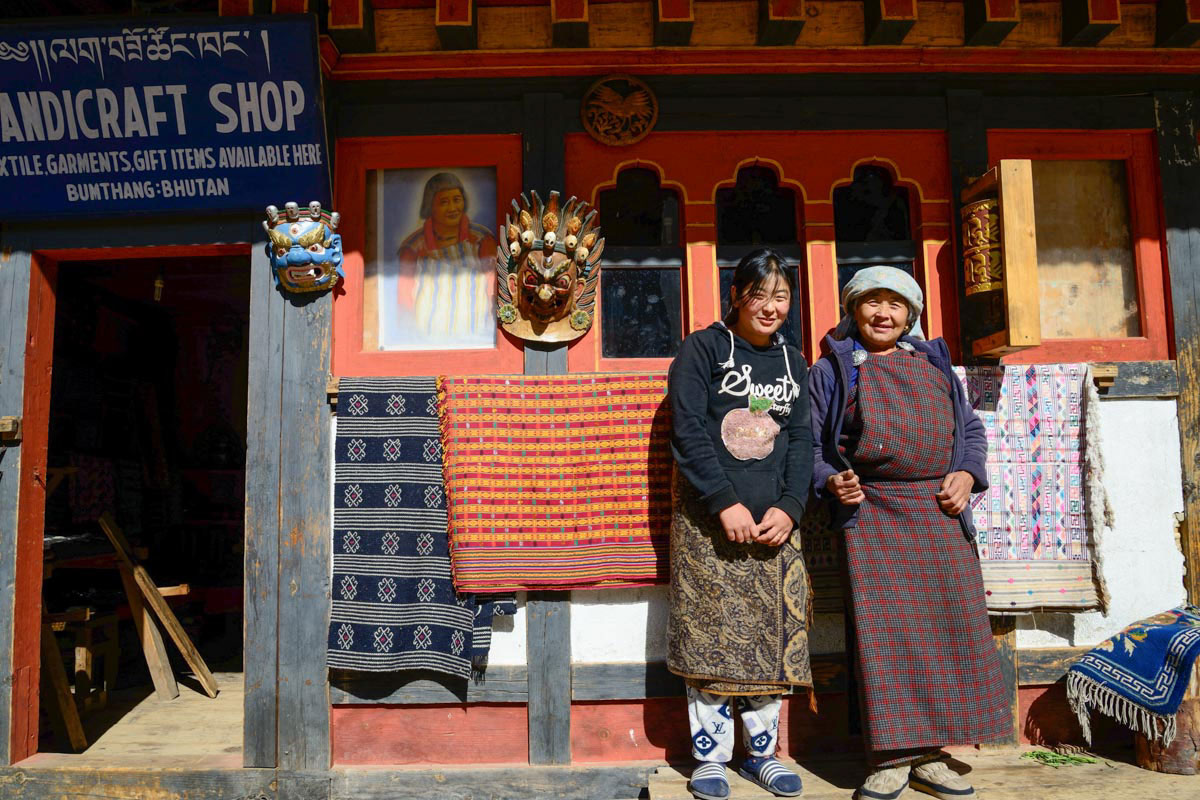
Great Stays
Luxury Bhutan Hotels
Amankora Resorts
Le Meridien
COMO Uma Hotels
Aman Bhutan
Lechuna Heritage Lodge
Zhiwa Ling
Dewachen
Luxury Hotels
Paro | Hotel Zhiwa Ling or Como Uma
Thimphu | Le Meridien
Punakha | Hotel Densa or Como Uma
Phobjikha | Gangtey Lodge
Bumthang | Luxury Lodge
Haa | Lechuna Heritage Lodge
Ultra Luxury Hotels
Amankora Paro
Amankora Thimpu
Amankora Punakha
Amankora Gangtey
Amankora Bumthang
Heritage Hotels
Paro | Hotel Tenzinling
Thimphu | Hotel Galingkha
Pukakha | Hotel Vara
Phobjikha | Hotel Dewachen
Bumthang | River Lodge
Haa | Lechuna Heritage Lodge
Photo
KIM BANNISTER PHOTOGRAPHY | HIMALAYAN TREKS, CYCLE TRIPS & TRAVELS
Kim Bannister Photography
CYCLE THE HIMALAYA PHOTOS
Guided Cycling Trips
KAMZANG JOURNEYS | ALL ABOUT US IN PHOTOS
Explore Kamzang Journeys
KAMZANG JOURNEYS | YELLOW TENT PHOTOS
The Yellow Tent of Eternal Happiness

HIMALAYAN WILDLIFE, BIRDS & FLOWERS PHOTOS
Himalayan Wildlife, Birds & Plants
HIMALAYAN DESIGN & CULTURAL PHOTOS
Himalayan Design & Cultural Photos
KAMZANG JOURNEYS GROUP PHOTOS
Kamzang Journeys Groups
KAMZANG JOURNEYS STAFF PHOTOS
Kamzang Journeys Staff
THE KAMZANG FUND & KAMZANG KIDS PHOTOS
The Kamzang Fund

NEPAL JOURNEYS PHOTOS
Nepal Journey
INDIA JOURNEY PHOTOS
India Journeys
TIBET JOURNEYS PHOTOS
Tibet Journeys
BHUTAN JOURNEYS PHOTOS
Bhutan Journeys
MYANMAR (BURMA) JOURNEYS PHOTOS
Myanmar (Burma) Photos
MONGOLIA JOURNEYS PHOTOS
Mongolia Journeys
SOUTHEAST ASIA PHOTOS
South East Asia Photos
